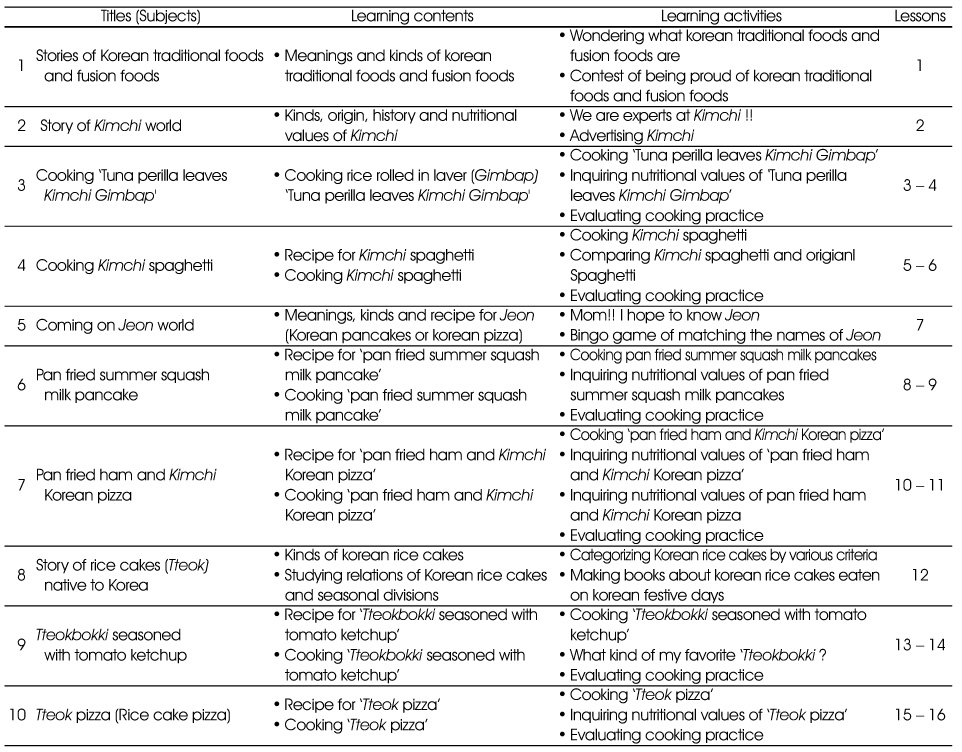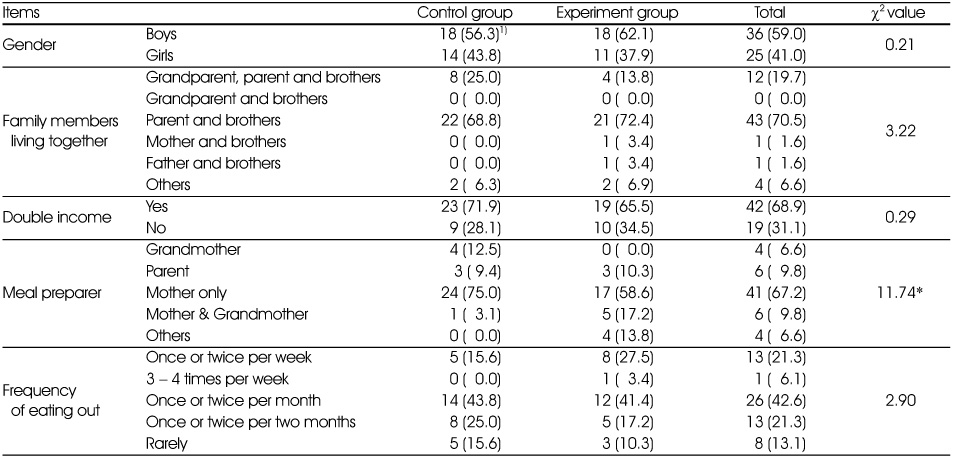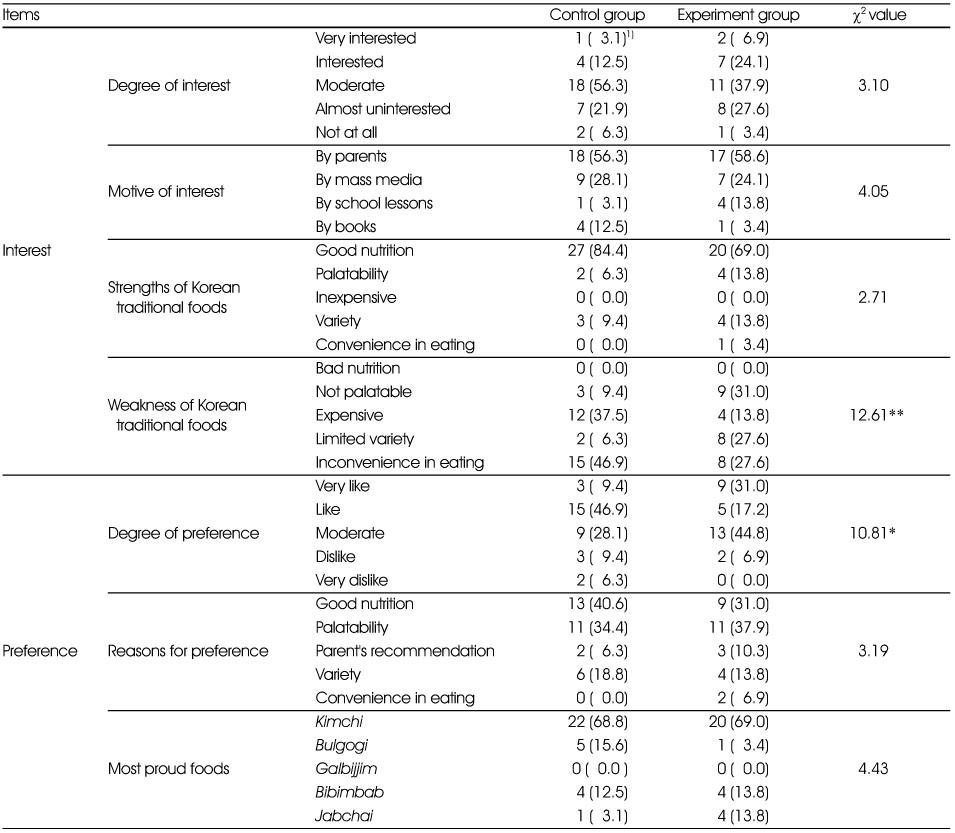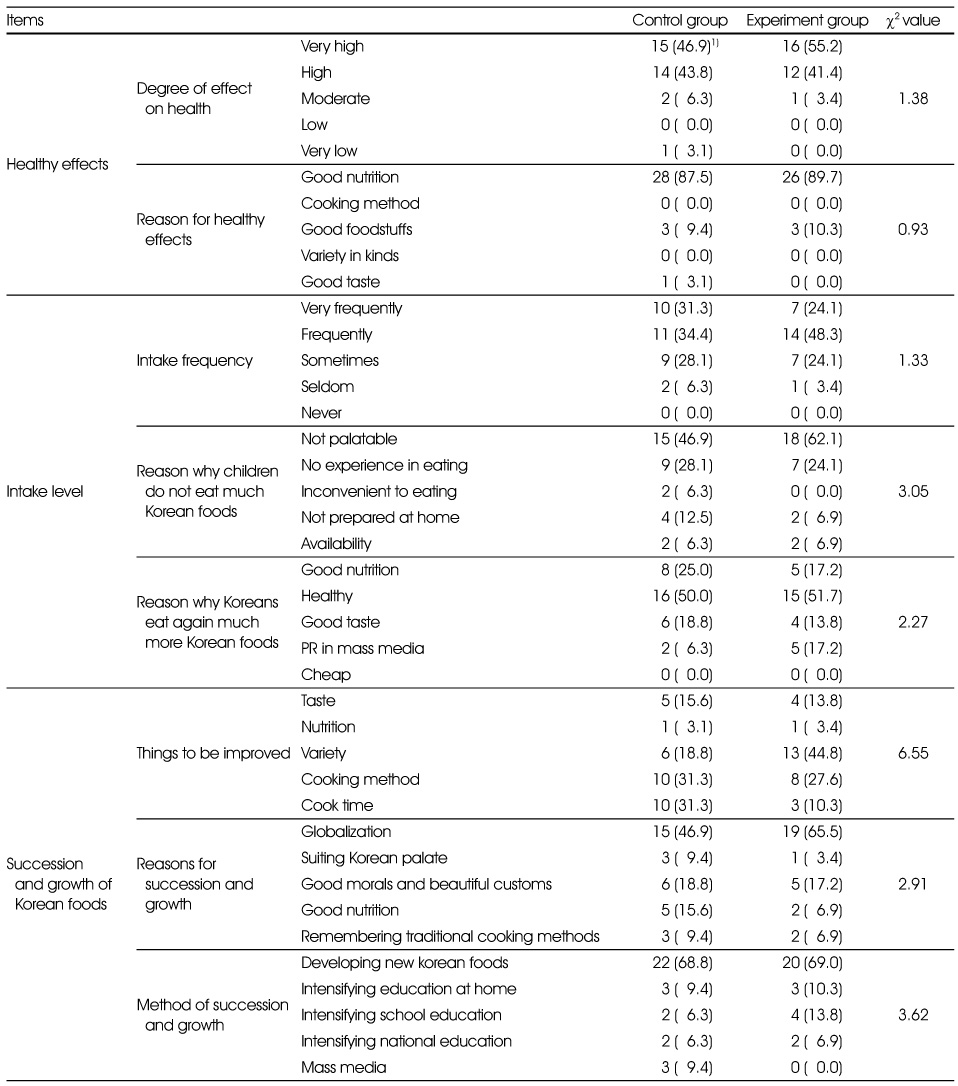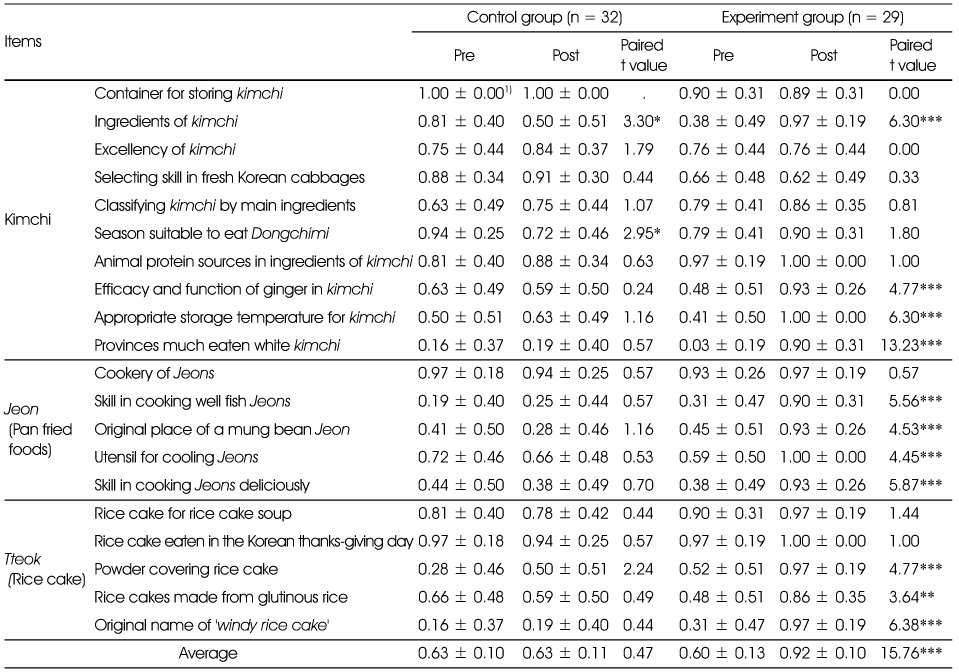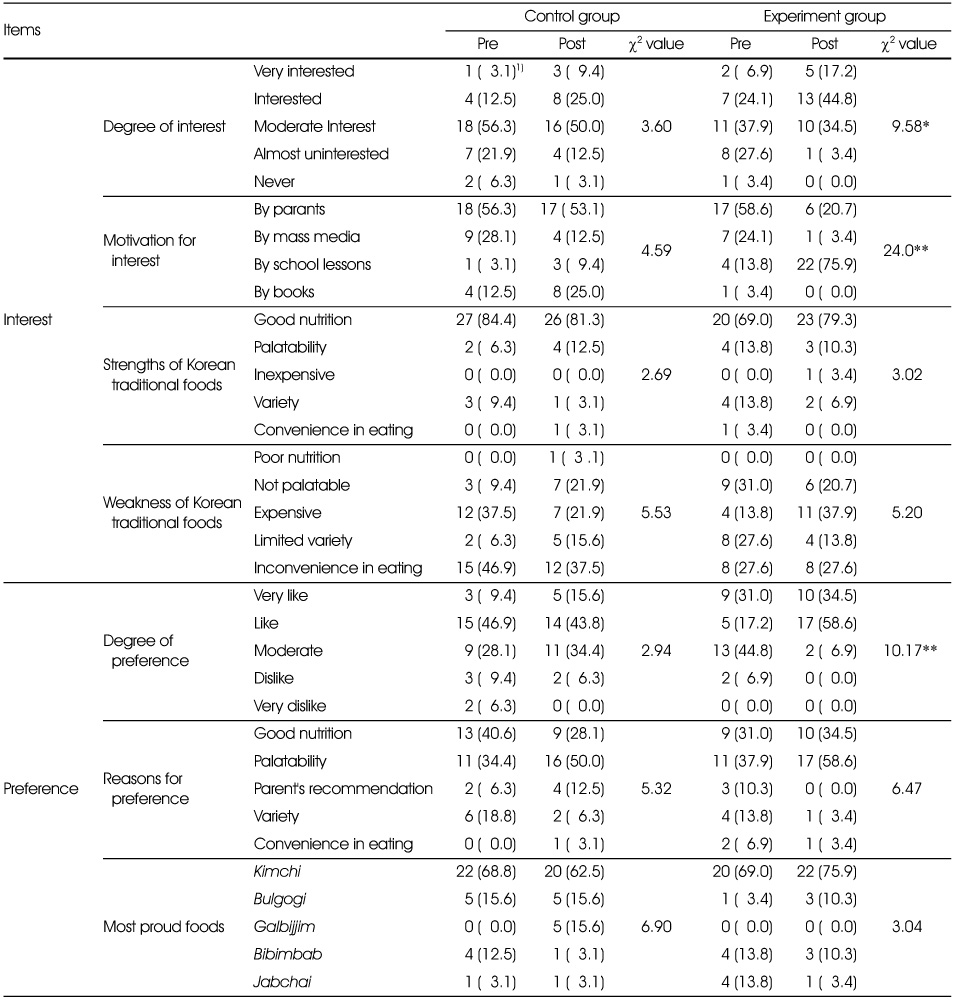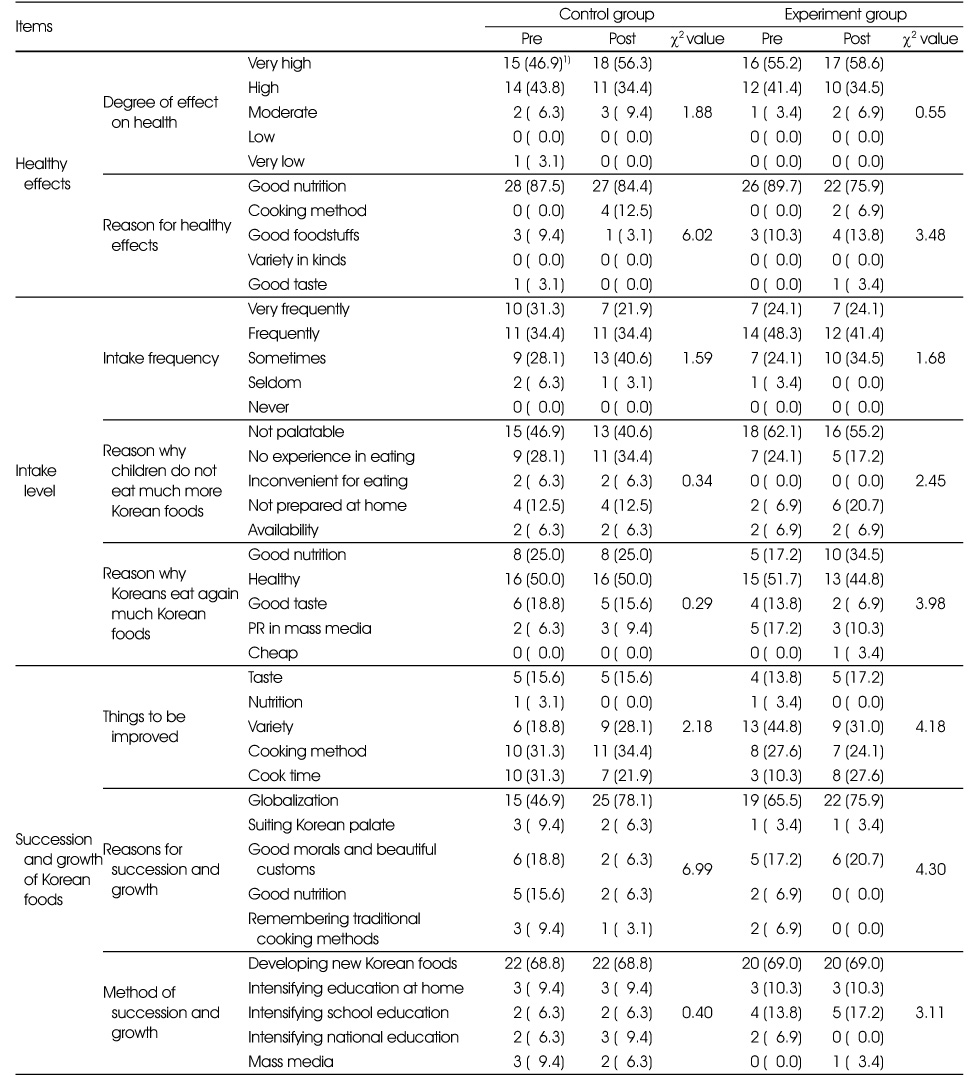Effects of Fusion-Food Cooking Activity on Elementary School Students' Knowledge, Preferences and Perceptions of Korean Traditional Foods
Article information
Abstract
The purpose of this study was to develop a fusion-food cooking program and apply that to sixth grade elementary school students, and to investigate its' effects on their knowledge, preferences, and perceptions of Korean traditional foods. The program focused on ten components. Students learned the general features of Korean traditional foods and Western foods in the 1st lesson. They learnt about kinds, nutrition value, and histories of kimchi, Tteok (rice cake), and Jeon (pan fried food), and cooked two fusion-foods of kimchi, Tteok, and Jeon each. As a result of learning about those food items, the students advanced their knowledge (p < 0.001) of kimchi, Tteok, and Jeon. Their preferences for Tteok (p < 0.05) and Jeon (p < 0.01) were increased, but those for kimchi remained unchanged. The interest (p < 0.05) and preferences (p < 0.01) for the general Korean traditional foods were increased. In conclusion, our results suggested that the fusion-food cooking program had the ability to improve elementary school students' perceptions of Korean traditional foods by increasing their knowledge, preferences, and interest in them. Furthermore it was considered that the program could help students understand the value of Korean traditional foods and in turn may encourage them to consume such food items more frequently. Since the fusion-food cooking activity program can be a good learning program as shown by the results of this study, more fusion-foods cooking activity programs, which are not discussed in this study, should be evaluated and developed in the future.
